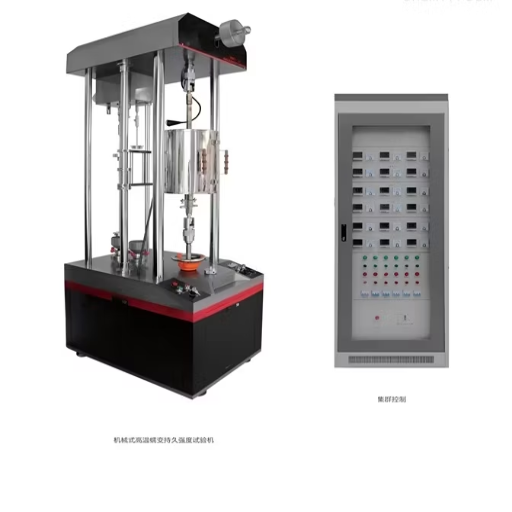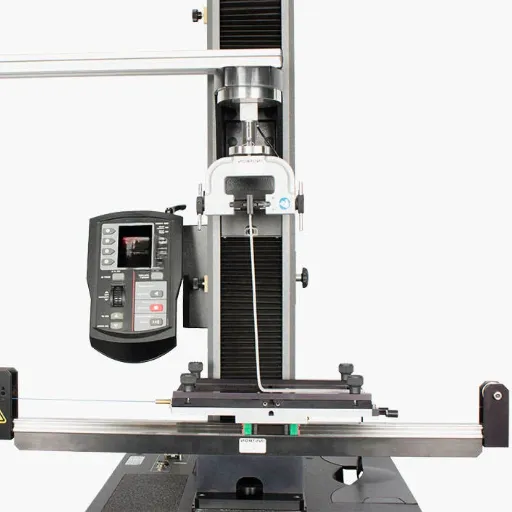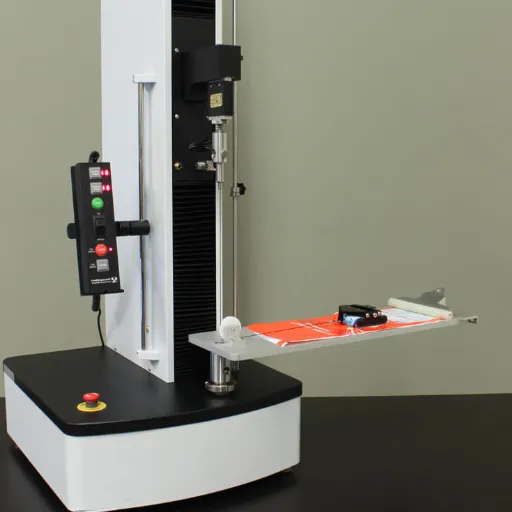Creep and stress rupture are very important concepts in material science and engineering and therefore play a crucial role in factors governing long-term material performance and failure under high stress and temperature conditions. This blog post will introduce you to the fundamental aspects of these phenomena, weighing the importance of creep testing and rupture stress analysis in material assessments for durability and reliability. Engineering professionals, researchers, or inquisitive minds looking into the behavior of materials under harsh conditions will find this article worthy of clear, in-depth coverage. From testing methods to the detailed mechanics behind stress rupture, everything will be disclosed to provide insight into contemporary challenges and advances in material performance. Let’s get into the science of pressurized materials!
Understanding Stress Rupture

Definition of Stress Rupture
It happens that stress rupture is the overarching term used to describe the breaking or failure of a material after having undergone a certain period of sustained stress and elevated temperature. Rather than an immediate failure brought about by overstress conditions, stress rupture happens over an extended period, typically under heating and pressing conditions. This phenomenon is critical in materials science for the determination of long-term life and performance ability of materials in severe working environment.
The slow deformation associated with stress rupture begins with creep. This slow deformation progresses while the material is exposed to a sustained force. The microscopic damage accumulates over time in the material, resulting in the initiation and growth of cracks and, ultimately, failure. The rate of crack growth or time of rupture is influenced by the material properties, the applied stress level, the operating temperature, and many others. Materials employed for high-temperature applications are often tested for stress rupture, such as turbine components and pressure vessels, where prolonged stress resistance must be ensured.
The understanding of stress rupture is imperative in aerospace, power, and construction industries where complete failure of materials leads to catastrophic consequences. Engineers and scientists employ these time-tested tests, such as creep, and models such as rupture life to predict a material life under specific conditions and improve material design or insure safety in applications involving loads and temperatures.
Mechanisms of Stress Rupture
When a constant load or stress is applied on a material for a longer time, stress rupture occurs, leading to a failure. Under high-temperature environments, such failures mainly occur due to materials deforming plastically rather than undergoing a sudden fracture. A great deal depends on such variables as the material composition, the applied stresses, and the environmental conditions as regards the fundamental mechanism behind stress rupture.
Creep deformation significantly affects stress rupture. During the process, the material slowly changes shape due to the motion of atoms or dislocations. In time, such microstructural changes weaken the material, leading to the final failure under static load. At an increased temperature, the creep rate is greatly enhanced, thus making temperature an important factor in the rupture life determination.
This failure mechanism operates at a higher level, particularly at grain boundaries. These voids appear under stresses and high temperature, grow, and eventually coalesce to reduce the integrity of the material. This process is called intergranular cracking and is a chief form of stress rupture. In order to avoid such failures, engineers select appropriate heat-resistant materials, surface treatments, or design the components to lower stress concentration.
Differences Between Stress Rupture and Other Stress-Related Damage
Stress rupture from other stress-related damages due mainly to its mechanism and time-dependent nature. Stress rupture is a slow formation process occurring when the same high-temperature stress is applied to a material for a longer time, causing the material to yield and feel pain. Unlike immediate-opposite fracture-after load is beyond limit, it takes some time before stress rupture is realized-its onset goes ahead through stages of creep and development of voids and cracks under continues conditions.
Stress fractures, in contrast, though also stress-related phenomena, are essentially different. Stress fractures are usually caused by repeated loading or cyclic forces stronger than the material’s endurance limit. They produce a sudden and localized fracture without any long-term exposure to the higher temperature or sustained stress concerning stress ruptures. Instead, some rapid or repeated mechanical loadings are usually responsible for it rather than environmental factors such as heat.
Another key difference lies in preventing and mitigating actions. Stress rupture can often be prevented by the selection of materials designed for high temperature and prolonged stress applications, such as alloys more resistant to creep. Prevention of stress fracture, on the other hand, is brought about by enhancing the designs for a more even load distribution, reducing mechanical cycling, or selecting materials with higher fatigue limits. Understanding this difference is critical in the designing of components to resist the particular stress they will go through.
Primary Causes of Stress Rupture
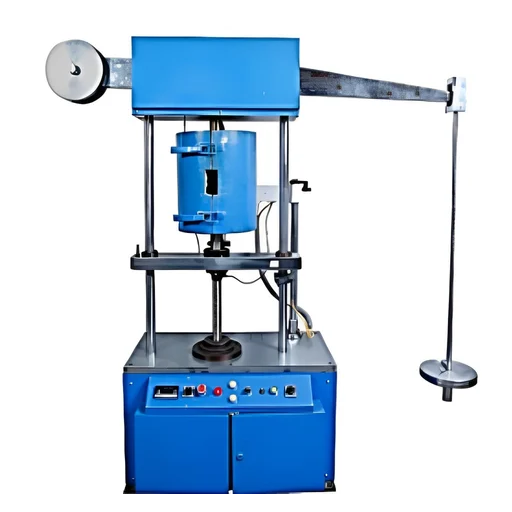
Prolonged Stress Under High Temperatures
Steresses are slowly brought upon materials, which are deformations that lead to final failure under higher temperatures. Under creep conditions, a material is subjected to slow and permanent deformation under stress, particularly when the temperature is high. Metals, polymers, and ceramics are the materials most vulnerable to creep under a sustained heat environment.
The operation temperature, the magnitude of the applied stress, and the material’s resistance to creep determine the process. Ib what may tend to deform at a given temperature and stress, atomic motion is promoted by high temperature, weakening the atomic bonds and allowing the actual deformation of a material. For example, certain alloys are designed to resist creep under the harsh conditions found in jet engines or power plants.
Prolonged exposure to elevated temperatures tends to cause damage, which necessitates the choice of materials and design of components carefully. For instance, using heat-resistant alloys and thermal barriers can enable a greater resistance on the part of the material against such environments. Moreover, reducing stress concentrations through good designs-and keeping controlled operating conditions will help in giving an extended life to the critical components.
Material Properties and Their Influence
When it comes to stress fractures in materials, the ultimate cause can often be said to be some repeated or excessive stress or combination thereof passing the material’s normal ability to withstand it with time. Feedback is generally due to some cyclic nature of loading which subjects the material under fluctuating pressures that gradually develop microscopic cracks on and beneath the surface. The microscopic cracks may eventually join together and form bigger cracks that weaken the material and cause failure. Through characterization of material properties like ductility, toughness, and fatigue resistance, engineers can predict and prevent such failures.
To avoid stressing fracture occurrence, metals with high fatigue resistance must be selected. Titanium and certain steel alloys are hence perfect candidates for components subjected to cyclic loads on account of their ability to resist repetitive stresses for long periods of time without degradation. On the other hand, composite materials may present a customized answer that combines strength with light weight to resist stress without much deformation.
Another way: The design also plays a prominent role in the prevention of stress fractures. Smooth geometries tend to reduce stress concentrations, while regular maintenance schedules provide early indications of fatigue. Thus, combining intelligent material selection with intelligent design can increase the long-term durability of components and work toward the safety of structures in the harshest environments.
Examples of Stress Rupture in Real-World Applications
Stress rupture is one type of failure that has been observed in many real-world situations, especially those occasions that have to do with extremely hostile environmental conditions or heavy mechanical loading. For instance, consider some turbine blades in a jet engine that operate at elevated temperatures and are mechanically stressed constantly. Eventually, stress rupture sets in, leading to failure of these blades. Prevention of such failures through the choice of state-of-the-art heat-resistant alloys, inspection methods, and maintenance is highly important to engineers, for it really means the safety and efficiency of such engines.
Another example is in the oil and gas industry, where pipelines are often subjected to high pressures and corrosive materials. Such circumstances create high stress conditions whereby ruptures may arise if materials are not adequately resistant. Stress rupture cases in pipelines have been a cause of significant environmental damage and expensive downtime. Prevention of the occurrence is through better material coating, continuous monitoring, and maintenance-intensive prediction.
Finally, stress rupturing finds its applicability in power plants, especially in boilers and pressure vessels acting under high temperature. Exposure to a material under a prolonged thermal stress condition results in its degradation and eventual rupture. By choosing creep-resistant materials, such as an alloy intended for high-temperature applications, and following stringent inspection procedures, it becomes less probable for structural failure to take place in these vital systems. These instances signify considerable targeted efforts against stress rupture in various industries towards safe and efficient operation.
Industries and Materials Affected by Stress Rupture

Aerospace Applications: Turbine Blades
Because they have to carry specific activities, the turbine blades used in aerospace engines are subjected to extreme operating conditions such as severe temperatures coupled with stresses. Stress rupture in a blade occurs due to extended duration of temperature and tensile stress, wherein the thermal activation makes the material susceptible to time-dependent deformation and eventual failure. Because of this phenomenon, the turbine blades will lose their shape, develop cracks, or fail, hence posing a risk to engine life and safety.
In the struggle against stress rupture or creep of turbine blades, aerospace industries use novel materials, such as nickel-based superalloys, which are meant for temperature resistance. Because these materials have great creep strength and durability, turbine blades can operate at high temperatures within the environment of stress. Further protection is given by thermal barrier coatings imparted to the blades themselves to reduce heat load on the blades further, thereby enhancing their life.
Regular inspections and maintenance are paramount in recognizing early signs of stress rupture in turbine blades. Using non-destructive testing methods such as ultrasonic or X-ray inspections can help engineers discern wear or small cracks before they grow into catastrophic failures. Using the best material, protective coatings, and vigilant monitoring, the aerospace industry tries to eliminate the possibility of stress rupture in turbine blades.
Power Generation: Pressure Vessels
Pressure vessels are considered crucial components of a generation system, as they are designed to hold gases or liquids at high pressures. They are required to meet safety standards to prevent catastrophic failure that all together threatens the system. Stress fractures are of prime concern for pressure vessels as structural integrity gets compromised, thus, compromising safety-level arrangements that could lead to hazardous consequences if left unresolved.
Stress cracks arise in pressure vessels due to extended stressing at high-pressure conditions, thermal variation, or material fatigue. These factors after a long time can weaken the metals or composites used in fabrication, creating microcracks or fissures that grow with application of stress. Early detection of such cracks is necessary to maintain safe and efficient performance of the vessels in question.
The best way to find out about stress fractures and to see to it that they do not occur is to conduct periodic maintenance and inspections. Using methods like ultrasonic testing, dye penetrant inspections, and radiographic imaging can aid the engineers in locating possible weak points or vulnerabilities without interrupting the system’s functioning. Furthermore, if good monitoring programs are put in place and excellent quality materials used, power generating plants will have a higher degree of protection against stress fractures as well as prolonging the safe operating life of their pressure vessels.
Manufacturing: Common Materials and Components
The option of material selection is extremely important to retain the safest measures in each pressure vessel and maintain durability under high stress. Usually materials like carbon steel, stainless steel, or alloy steels are used for better balance in strength, ductility, and corrosion resistance. They are preferred due to their ability to sustain high pressure and temperature emanating in power-generation plants.
To prevent stress fractures during operation, strict design criteria and inspections are placed on the material by the manufacturer. Stress fractures create with pressure cycling and exposure to a harsh environment-materials with verified mechanical properties must be installed. After fabrication, heat treatment and surface finishing may be used to strengthen components so that small cracks cannot grow large enough to cause failure.
Furthermore, the integration of advanced techniques such as welding and forging allows the construction of pressure vessels without any joining. A weld prepared properly in accordance with relevant procedures provides a uniform stress distribution inside the material, which is one of the major causes in stressing to fracture. Inspections, maintenance, and following safety standards upon operation greatly reduce the risk to these integral components.
Prevention Strategies for Stress Rupture
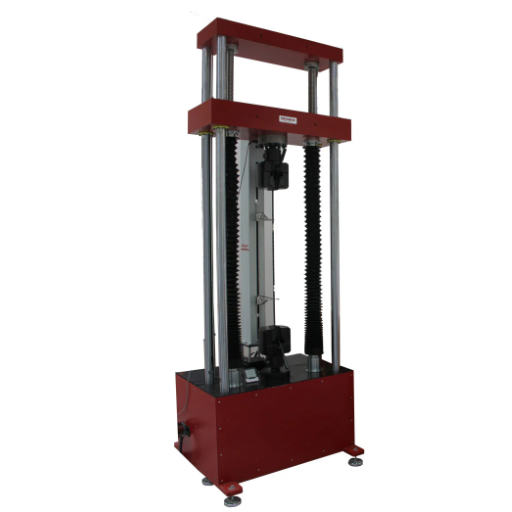
Material Selection and Design Considerations
The choice of materials is a key stage in stress fracture reduction. Materials ideally should have high tensile strength, excellent ductility, and resistance to environmental factors such as corrosion and temperature fluctuations. Stainless steel or titanium alloys are typical selections in that they can endure stress over long periods and in tough working environments. Based on specific operational conditions, materials are selected to ensure the best possible performance under foretasted conditions.
Good design measures are also important in the prevention of stress rupture. Emphasis should be placed on even stress distribution over the components during designing. Having rounded edges or a smooth transition lessens the chances of stresses concentrating in a locale and subsequent fracture at joins or corners. Consideration should also include safety factors and potential environmental stress factors during design that will improve the fatigue life and reliability of a base structure.
Testing and analysis of materials before realization play a crucial part in failure mitigation. Advanced modeling techniques including finite element analysis simulate load applications and predict stress concentrations during construction. Engineers thus use these insights to fine-tune designs to assure reliability under varying conditions. The best way toward solving and minimizing stress failures is perfect engineering through sturdy material and wise design choice.
Importance of Proper Maintenance Practices
Good maintenance procedures are necessary to preclude stress fractures from happening in structures. Inspections done regularly may serve to detect early any potential weaknesses in the structure or symptomsof wear, thus avoiding any abrupt occurrence of failure. Minor problems, in most cases, can be treated almost immediately to keep the structural integrity of a building in good shape throughout the years. A well-timed maintenance program ensures materials will be kept in good condition although they may be subjected to heavy use or adverse environmental conditions.
Maintenance also involves cleaning and protecting structural elements. Dust, dirt, moisture, or a corrosive agent may accumulate over time, weakening the material and making it susceptible to stress fracture. Therefore, the proper cleaning of materials that includes applying protective coatings or treatments shall extend the life of the materials by creating a barrier against harm. This kind of maintenance will help lessen damages and keep system stability intact.
Lastly, the maintenance schedules and procedures defined by the manufacturer must be complied with. Performing things like re-tightening bolts, replacing worn components, re-applying protective coatings or treatments, all sustain the performance intended for the concrete structure. Having the maintenance check up done by the right professionals will ensure the maintenance standards are maintained and will reduce the chances of stress cracks from occurring and assist in long-term serviceability. At the end of the day, good maintenance practices are the key to safety and functionality and thereby help in preventing the need for costly repairs or failures.
Role of Testing Labs in Preventing Rupture
Testing labs ensure that construction materials meet safety and performances standards. Through rigorous testing, these laboratories evaluate the strength, durability, and quality of materials such as concrete, steel, and other structural components. The testing itself may detect any weak points so that remedial works can be arranged before proceeding further with construction work.
With stress fractures, the testing laboratories analyze loads admitted to the material, structural stress limits, and potential load failures. By simulating real-life situations like dynamic loads or environmental stressors, testing laboratories provide data that act as an input for engineers to design safer structures and thus keep the stress cracks from appearing with the passage of time. This further serves to minimize the hazards arising from environmental factors like temperature changes or moisture exposure that tend to degrade material integrity.
Laboratories held a position of governance that testing ensured local and international safety standards were complied with. This regulatory alignment reduces liability risks and enhances the overall longevity of structures. By delivering precise, evidence-based results, testing labs contribute to the overall strength of infrastructure to save lives and prevent material rupture or deterioration leading to expensive repairs or catastrophic failure.
Innovative Solutions and Monitoring Techniques
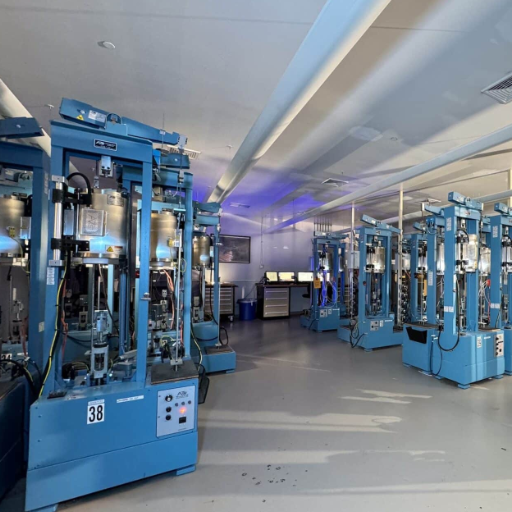
Cutting-Edge Technologies in Stress Rupture Testing
Modern technological advancements are working to provide a genuinely accurate and precise stress rupture testing. One such innovation is the high-temperature furnace coupled with a load application system. These setups allow the engineer to simulate real working conditions where stress is maintained for very long periods of time to study materials under very high pressure and temperature. An automated data collection system also is usually integrated into the setup, ensuring continuous monitoring and recording while eliminating the possibility of human error.
Implications for stress fracture analysis include non-destructive methods and digital image processing techniques. For example, high-resolution cameras and sensors are used to observe microstructural changes occurring in materials during testing to detect early signs of deterioration. Ultrasonic testing or X-ray imaging can be employed to evaluate internal damage without damaging the integrity of the material. Such mechanisms allow for the appraisal to be more thoroughly detailed.
Mixing machine learning and AI indeed put the last nail in the coffin of stress rupture testing. AI models can look at huge amounts of data from past experiments and predict how materials may behave and provide insights into their performance under different conditions. This gives an edge in choosing and designing materials with less chance of them failing under crucial infrastructure. These advanced technologies help with more accurate testing and go yearly in the knockout punch for building safer and sustainable materials the globe industries require.
Predictive Modeling Tools for Identifying Failures
Predictive modeling tools play a big role in analyzing data patterns and simulating conditions where materials might break down by stress. They use previous data, algorithms, and simulations to predict when and where stress fractures may develop. The engineers will then deal with such engineering problems ahead of time to ensure that materials are strong and efficient under all varied conditions.
Predictive modeling has one high advantage in that it can consider almost every type of environmental and operational change that materials are subjected to. Temperatures varying, mechanical stress applied repeatedly over time, etc., all contribute to the formation of stress fractures. Predictive tools replicate these conditions and project failures; this information can be used in improving material designs and risk reduction.
By Identifying weak points before failure, predictive modeling helps cuts down on repair and downtime costs. Safety design of infrastructure and the product is enhanced as the engineer may strengthen vulnerable sections or select alternative materials to prevent critical failures. Such insights enable an even safer structure but also satisfy sustainable norms by providing longevity to materials and minimizing the waste generated through premature failures.
Nondestructive Testing Methods for Stress Rupture
The process of nondestructive testing (NDT) inspects materials for stress rupture without inflicting damage on the tested parts. One such method is ultrasonic testing in which a material is subjected to high-frequency sound waves. Such defects are very likely to be considered potential failures due to stress.
Another method often employed is that of magnetic particle testing, especially for ferromagnetic materials. This consists of magnetizing the specimen and then applying iron particles to reveal surface and near-surface cracks. It clearly discloses indications of stress-related damage in components subjected to repetitive use.
Being able to check hidden cracks by means of radiographic testing (X-rays or gamma rays) is extremely helpful. This technique provides a detailed image of the internal structure to locate areas where stress rupture may exist. Properly used, these NDT methods should ensure that other failures are detected before failure, while still maintaining productivity.
Frequently Asked Questions (FAQ)
Q: Stress rupture testing requires what parameters?
A: Very important parameters for stress rupture testing are the applied stress and temperature of the test, as these direct the time to rupture. The mechanical behavior under these conditions can be used to ascertain the minimum stress rupture strength.
Q: What do yield strength and ultimate tensile strength tell us in stress rupture testing?
A: These are the important properties that describe the ability of a material to withstand applied stress before either deforming or failing. They are usually measured in tensile tests and provide a reference to compare the test material behavior under stress rupture tests.
Q: Discuss conduct of stress rupture tests?
A: Stress rupture tests are usually performed at a constant temperature with the application of a specified load on a test specimen up to its failure. The tests can be conducted in the vacuum or under inert atmosphere to avoid oxidation and any other environmental effects that can influence the results.
Q: What is the effect of temperature in stress rupture testing?
A: Temperature is perhaps the most important parameter altering the mechanical behavior of materials in stress rupture tests. Specimens subjected to varying stresses at a given temperature can provide how materials respond under various thermal conditions, thus delivering invaluable information regarding life and durability.
Q: How does the increase in stress affect the time to failure?
A: As the stress upon a material is increased, the time to failure decreases. This relation must be well understood by engineers so that they can fix a permissible level of stress acceptable for a material to be used in high-stress application.
Q: What is the idea of conducting microscopy for stress rupture?
A: The microscopic identification helps to observe the changes induced in materials during stress rupture. It gives qualitative insight about creep damage that helps in understanding how and why materials fail when subjected to prolonged stress conditions.
Q: Can stress rupture testing services give input for design parameters?
A: Yes. Stress rupture testing services are, in fact, instrumental in obtaining important design parameters. It is the main information from these tests from which engineers design components to withstand the anticipated stresses and temperatures to assure safety and reliability in a wide range of applications.
References
-
AZoM – What is Creep and Stress Rupture Testing?
This article explains the evaluation of materials under prolonged stress and elevated temperatures. -
ScienceDirect – Stress Rupture Overview
A detailed overview of stress rupture, describing how materials fail under permanent high loads over time. -
NIST – The Mechanical, Stress-Rupture, and Fracture Toughness
A study on stress-rupture properties and their dependence on applied stress levels.

